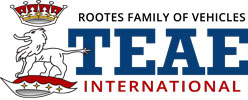by Stu Brennan
In the late summer, I received a call from George Levin, a member of the Sunbeam Tiger Owners Club (England) from Glasgow, Scotland. He was visiting the Boston area and had been given my name by the staff of the Museum of Transportation in Brookline, where we hold the British Car Day Picnic. We were unable to meet before his return home, but we have corresponded several times since. One of the items received was the Autumn issue of the STOC magazine. This issue was just over 60 pages in length, full of letters, articles and photos submitted by the membership. Many articles were long, surprisingly well written, and-more often than not- ripe with “tongue in cheek” comments. It made for really great reading. Their articles show them to be an incredibly active bunch with details on numerous gatherings (such as their annual trip to LeMans for the 24 hour race and “Tiger Hi Noon”, their celebration of the 25th anniversary of the Tiger-July 23, 97 Tigers present). One article in their Autumn issue concerned Mark Pollard, a member who runs a Tiger in a HSCC racing class that requires totally stock cars. One of his OEM steel wheels suffered a horrifying failure around the bolt holes during a practice session at Oulton Park (fortunately resulting in only a bad scare and no injuries). Pollard was petitioning the officials of the racing club to allow a modem wheel to be substituted. He pointed to the Rootes Competition Options Manual issued in 1965 that specifically stated that the stock steel wheels were only suited for street use and would not be safe for any form of competition. Several similar failures on “works” rally Tigers of that era were cited (in the December issue of Classic and Sports car, another British monthly. it was mentioned in two articles that Pollard’s request had been approved). This is something to consider if you autocross or place abnormal stresses on your stock wheels.
